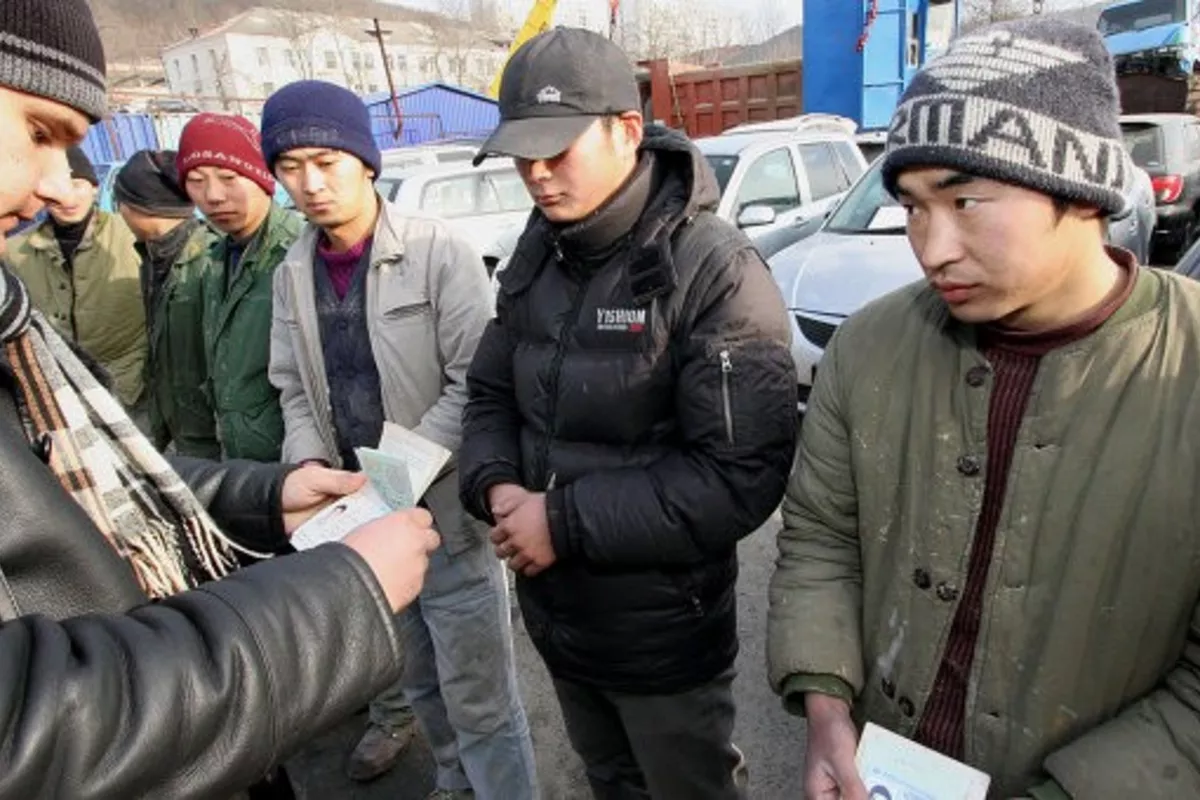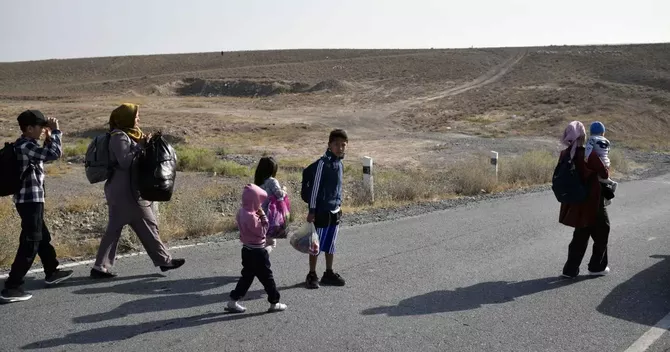
Photo: The Jamestown Foundation
Everyone is familiar with the concept of a “labor migrant.” And it is more than just a familiar term. In today’s world, marked by numerous conflicts and problems, there are countries where a significant number of people strive to leave their homeland to work abroad. The reasons for this vary widely, but in most cases, a person chooses to become a migrant because they cannot find a decent job with a fair salary in their own country.
There are also situations where people are forced to leave for reasons of safety, because their homeland is no longer safe - due to military conflicts, high crime rates, or oppressive laws. For many, migration becomes the only possible way to protect themselves and their families.

Photo: US Department of Labour
In addition, many people seek to work - and consequently live - in places where life is more comfortable and modern. This has always been the case throughout history. There have always been more advanced, prosperous, and developed countries, and there have always been those with lower levels of development and living standards. The situation is particularly acute in countries with very large populations, where the number of people exceeds the number of available jobs. In such societies, there are simply not enough jobs to meet the needs of everyone, and as a result, people are pushed to seek opportunities elsewhere.
It is no secret that today, almost all the countries that were once part of the former Soviet Union are deeply affected by the phenomenon of labor migration. Some of these states have become “suppliers” of migrants, while others are countries that receive them and, in some cases, actively need this workforce. However, these processes are far from always peaceful or conflict-free. On the contrary, they are often accompanied by serious social, economic, and political tensions. In recent years, certain events in this sphere have appeared contradictory, raising questions and concerns among both experts and ordinary citizens.
For decades, Russia has been the primary destination for labor migrants from across the post-Soviet space. It has been the main country where people seeking work abroad have headed, a trend that has been especially strong over the past 10 to 15 years. The reasons for this are clear. Russia has a large, diversified economy, an immense territory that constantly requires new workers, and, compared to neighboring countries, relatively attractive wages. For many labor migrants, what matters most is not only finding employment but also the ability to send part of their earnings home to support their families. Of course, much depends on the migrant’s profession and field of work: the salary of a construction worker, a courier, or an IT specialist in Russia can differ dramatically, which directly affects how attractive migration to Russia appears.
However, modern statistics show that the situation is gradually changing. Back in 2013-2014, there were around six to seven million labor migrants living and working in Russia. Today, that number has almost halved, now standing at around three to three and a half million. The decline has been steady since 2015. Experts point to several reasons for this shift.
First and foremost, the sharp depreciation of the Russian ruble against the U.S. dollar since 2014 has had a significant impact. For labor migrants, whose goal is often to send money home, this currency drop has substantially reduced the value of their remittances, making work in Russia much less financially rewarding.
Another major factor has been the tightening of Russia’s migration laws over the past few years. The process of entering the labor market has become more complicated and more expensive. The costs of obtaining the necessary documents, permits, and work patents have risen sharply, making legal employment less accessible. As a result, many migrants have been forced to leave or to seek work elsewhere, leading to a gradual decrease in their overall numbers.

Photo: Human Rights Watch
According to data from Rosstat published at the end of 2024, the majority of migrants arriving in Russia come from Tajikistan, accounting for 31% of the total. Kyrgyzstan follows with 10%, and Ukraine is next with 9%. However, Tajik media frequently report that many of their citizens working in Russia face extremely difficult working conditions, limited access to healthcare, and other serious challenges. These problems not only affect the well-being of migrants themselves but also damage Russia’s reputation as a destination for foreign labor.
At the same time, there is some puzzling information. Rosstat has reported that in 2024, Russia experienced a net migration gain of 568,500 people - the highest figure since 1995. According to the agency, 4.081 million foreigners entered the country, while 3.513 million left. At first glance, these numbers seem impressive, but they have raised skepticism among experts.
Olga Chudinovskikh, Director of the Center for Migration Policy, commented on this data:
“It is too early to say whether the statistics published by Rosstat reflect the actual situation. We do not yet know whether this is a case of double counting or an improvement in record-keeping. Therefore, at this stage, it would be extremely reckless to claim that there has been an unprecedented influx of migrants. I would not recommend making such assertions until Rosstat provides an official explanation of what caused this apparent increase.”
One possible explanation, according to experts, is Rosstat’s transition to a new electronic system for tracking migration flows. Since the system is still being fine-tuned, there is a possibility that technical glitches may have led to statistical distortions.
Nevertheless, one thing is clear: a large number of migrants are leaving Russia and returning home. This trend appears to be widespread across the region. Just a few days ago, Uzbek President Shavkat Mirziyoyev announced that since the beginning of this year, around 700,000 labor migrants have returned to Uzbekistan.
According to the president, this surge in returning workers is directly linked to the implementation of large-scale economic reforms, the creation of new jobs, and an overall improvement in the business climate within the country.
This is undoubtedly a highly significant development for Uzbekistan. The mass return of labor migrants can be seen as a sign of positive change, reflecting the country’s progress in strengthening its economy and providing opportunities for its citizens at home. For the state, this means not only the growth of the domestic labor market but also the chance to utilize the skills, experience, and resources that returning migrants have gained abroad.
At the same time, the government faces a new challenge: ensuring that these people can successfully reintegrate into society and secure decent employment in their homeland. If this is achieved, it could help prevent a new wave of outward migration in the future, turning what was once a problem into a powerful driver of national development.
Share on social media